I like to think that there are some really great things here. I hope you enjoy this post.
Smile for the day…

Norway and Russia settle cargo dispute
Norway and Russia have found a way to deliver goods to Russian settlements on Norway’s Arctic archipelago of Svalbard.
The statement comes after a week of tension between Moscow and Oslo, after Norway halted two cargo containers destined for Russian miners living on the archipelago on June 15, citing sanctions imposed on Moscow over its conflict with Ukraine.
Russia insisted that Norway’s “unacceptable” ban on supply deliveries was depriving Russian miners of “critical” goods, including food, medical equipment, building materials, and spare parts. Moscow threatened “appropriate retaliatory measures” if the issue was not resolved.
The Norwegian Foreign Ministry now claims that the containers were blocked because they were being transported on Russian vehicles, which were banned from bringing cargo over the Russian-Norwegian border. However, it noted that there would be no issue if these containers were brought to the miners using Norwegian vehicles instead.
Dad Recycles Old Crayons Into New Ones for Schools, Hospitals and Art Programs

No young artist can resist the crisp, new box of crayons that back-to-school season so often brings, but not every little artist has access to them.

He now extends their useful life through his nonprofit startup, The Crayon Initiative, boiling them down and repurposing them into new boxes of crayons for kids in need.

It’s changing the shape of the crayons themselves, too, making them easier for special-needs children to hold. It all started about four years ago, when the Danville, California dad was out to eat with his family one evening, and the waitress brought crayons for the kids.

“He was fiddling with a crayon and said, ‘I wonder what happens to these when we leave,’” his wife, Marissa Ware, told Contra Costa Times.

More than 100,000 boxes, donated from all over the U.S., have already been transformed into 800,000 thicker, triangular-bodied crayons, while towering bags of old crayons, sorted by color still await their turn in the melting pot.

Bryan Ware estimates he has invested nearly $30,000 of his own money into the startup. He partnered with a physical therapist to create the new crayons’ easy-grip design, then arranged for the manufacture of the metal molds needed to transform old crayons into the new shape.
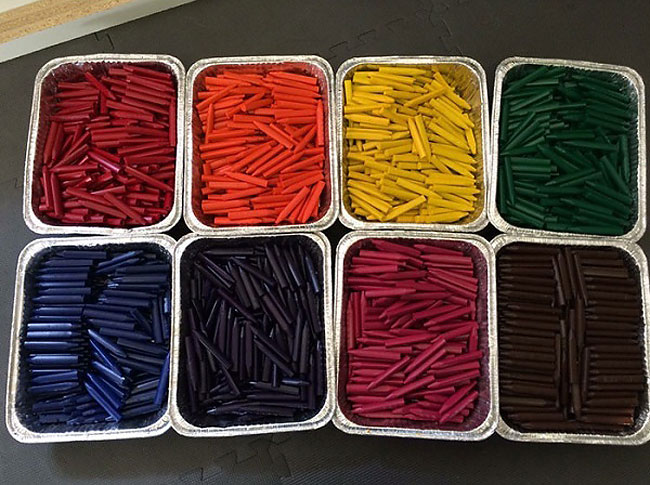
With the old crayons piling up in his garage, what he needs now is the corporate funding to scale up and move the operation out of his family’s home and into a proper production facility, complete with warehouse.

But for now, with or without other family members’ help, he’ll go on spending 30 to 40 hours a week at the kitchen stove, stirring two big stainless-steel pots full of melting crayons.

To learn more or to donate to the Crayon Initiative, go to thecrayoninitiative.org. Old crayons can be sent to 540 Glasgow Circle, Danville, CA, 94526.

NASA to build a nuclear base in the moon before Russia and China
According to recent reports, NASA and the U.S Department of Energy (DOE), announced on June 21, that they are jointly advancing space nuclear technology. They have planned three design concept proposals for The Fission Surface Power Project. Russia and China already have similar concepts.
The project plans to build a 40 kilowatt-class nuclear fission power system on the moon. According to NASA, this power system can power 30 homes for 10 years, the equivalent of a small nuclear power plant. The design proposals came from US aerospace companies Lockheed Martin Space Systems, and Electrical Companies Westinghouse and IX. The latter is a joint venture between autonomous driving systems company Intuitive Machines and nuclear reactor designer X-Energy. These companies will each receive a 12-month contract worth $5 million.
NASA and DOE want to explore nuclear technology in space. After all, electricity is not available on the moon or beyond, and other methods aren’t viable. When astronauts get to the moon and then to Mars, they will need a reliable and portable power system. The power system should also be able to operate in different places and in different environmental and weather conditions. Nuclear Fission Power generation systems meet these criteria.
Until the end of the century, NASA and DOE hopes to test a 40 kW class nuclear fission system on the moon. This power system will pave the way for long-term human missions to the moon and Mars.
“The nuclear fission surface energy project is a practical first step toward building a nuclear power plant on the moon for the United States,” John Wagner, director of the U.S. Department of Energy’s Idaho National Laboratory, said in a statement.”
To recall, NASA had already tested another space nuclear power project. The KiloPower Project was launched in 2015, as the new generation of space nuclear reactors. In May 2018, the project completed all major surface tastes. Last year, DOE and NASA collaborated on a request for comments asking the U.S. companies to provide design concepts for nuclear fission surface energy systems.
The goal is clearly to build solid energy stations between the Moon and other planets. For now, everything sounds like a big brainstorm, but we can’t say that this is impossible. Worth noting that China, Russia, and other aerospace powers have also begun to explore the application of nuclear energy in space. We are curious to see if this will be the start of another technological race. Aerospace exploration, once again, will be a center of discussion in the next few years. The cold way between Russia and the United States accelerated space exploration several years ago. Now, we’re living in an era of tensions between these three countries. Will this lead to a second cold war? Time will tell.
Katharina Detzel
Katharina was admitted to an asylum after sabotaging the rails of a train so that it crashed, for stealing, and many other crimes.
The curious thing about this woman is that when she arrived at the asylum, Katharina made a life-size doll with the straw from her bed. She hit him when she was angry, and when she was happy she danced with him. This doll, she gave her the surrogate love that she needed so badly while inside the mental institution.

As you can see, the doll has three key features, a beard, glasses and a penis.
During her stay, she tried to escape from the institution numerous times, and after almost 20 years trying, she succeeded, after which she was taken to another mental institution where she was never known what became of her.
From HERE
In her desire for freedom she made a whole series of runners and keys out of wood. She made figurines from bread dough (e.g. Shakespeare). Detzel also worked on a human figure with wings and made the photographed life-size male, which she hanged in her single cell. With the help of this figure (which exuded a certain authority with glasses, penis and beard, it reminds us of the ideal type of a scientist or physician of that time) Detzel tried to be relocated from the cell to the dormitory, from where she could escape. She explained to the doctors that she would soon be like this doll: should she continue to be isolated, then she too would soon be lifeless in the cell. Detzel was unsuccessful: The doctors did not respond to her threat, but removed almost all items from the cell: mattress, canvas, clothes (even her shirt) was taken from the patient, she has only chaff in the cell.
Detzel continued to vigorously opposing the suppression of patients by staff and sanctions (e.g. prolonged baths). In her struggle against social injustice, she wanted to establish a home for infants, compiled a pamphlet against prostitution and wrote a play entitled “The Extramarital Child or the Child Bed of Righteousness”.
After 19 years, she finally managed to escape from the institution. She moved out with her daughter. In 1939 Detzel was arrested again. This time because of theft and forgery. She was soon institutionalized, this time in Andernach. In 1941 she moved to another institution, Johannestal in Süchteln. It is uncertain if she survived the war and the Nazi Euthanasia Program.
The photograph above is part of the Prinzhorn Collection. The collection (on display in the University of Heidelberg Psychiatric Clinic) is made up of approximately 6,000 works, all created by inmates of psychiatric institutions between 1840 and 1940. It ranges from water-colors, drawings, paintings and sculptures to textile works and texts. The major part of it was collected by art historian and psychiatrist Hans Prinzhorn (1886–1933) while he worked as assistant physician at the Psychiatric Hospital of Heidelberg University.
US asked Russia to reconsider mercenaries’ status – Moscow — RT World News
Washington has requested that captured American mercenaries be treated as combatants, according to Deputy FM.
The United States has requested the recognition by Russia of American fighters captured during the Ukraine conflict as combatants, Russia’s Deputy Foreign Minister Sergey Ryabkov said on Friday.
“There was a certain signal from the American side, mainly focused on the fact that these individuals should be considered combatants under the definition of the Geneva convention and should be subject to the relevant protections,” he told reporters.
The deputy FM added, however, that the topic of American mercenaries had not been explicitly discussed between Russia and the US.
According to Ryabkov, the presence of foreign mercenaries аnd their actions “on the side of the Armed Forces of Ukraine and nationalist battalions” is now one of the most “serious and problematic moments” in Russia’s relations with the US and other Western countries.
He said that the actions of captured foreign mercenaries are being investigated to determine the circumstances of “their appearance in the combat zone and the role they played there.”
“We have repeatedly warned the citizens of countries that are unfriendly to Russia to refrain from adventurous plans to ‘prove themselves’ on the battlefield in Ukraine,” Ryabkov pointed out. “But those who do not take these warnings into account are reaping the fruits of their own misanthropy and unwillingness to accept the reality of the situation that has unfolded in the region.”
On Tuesday, Russian Defense Minister Sergey Shoigu announced that some 170 foreign mercenaries had been killed in Ukraine “over the past 10 days” and that 99 had “refused to participate in combat and left the territory of Ukraine.”
Meanwhile, two American fighters – Alexander John-Robert Drueke and Andy Tai Ngoc Huynh – are currently awaiting trial in the Donetsk People’s Republic where three foreign fighters from the UK and Morocco were handed out death sentences last month over their “illegal activities.” The death sentences, however, have yet to be carried out as all three foreigners have appealed the Donetsk court’s verdict.
The tomb of Liu He
When archaeologists opened the tomb of Liu He, Lord of Haihun of the Han Dynasty, they found a pile of money. This includes 5,330,000 ancient copper coins, weighing about 10 tons, and 358 gold cakes.
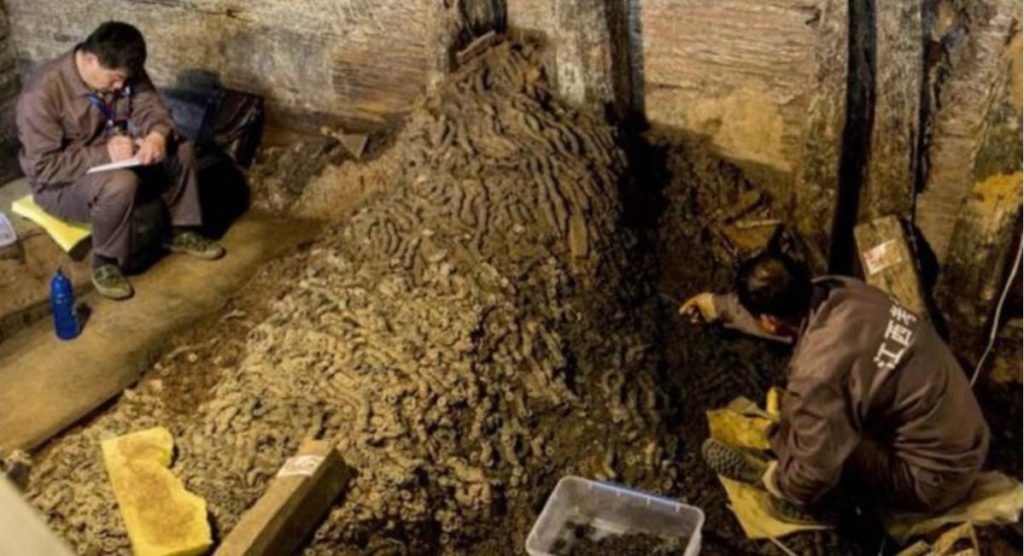
As a distant relative of the royal family, Liu He was the emperor of the Han Dynasty for 27 days.
However, he couldn’t do the job. He liked music and chess, but didn’t really know how to become an emperor.
Unsurprisingly, he was quickly overthrown, and transferred south with his treasures.
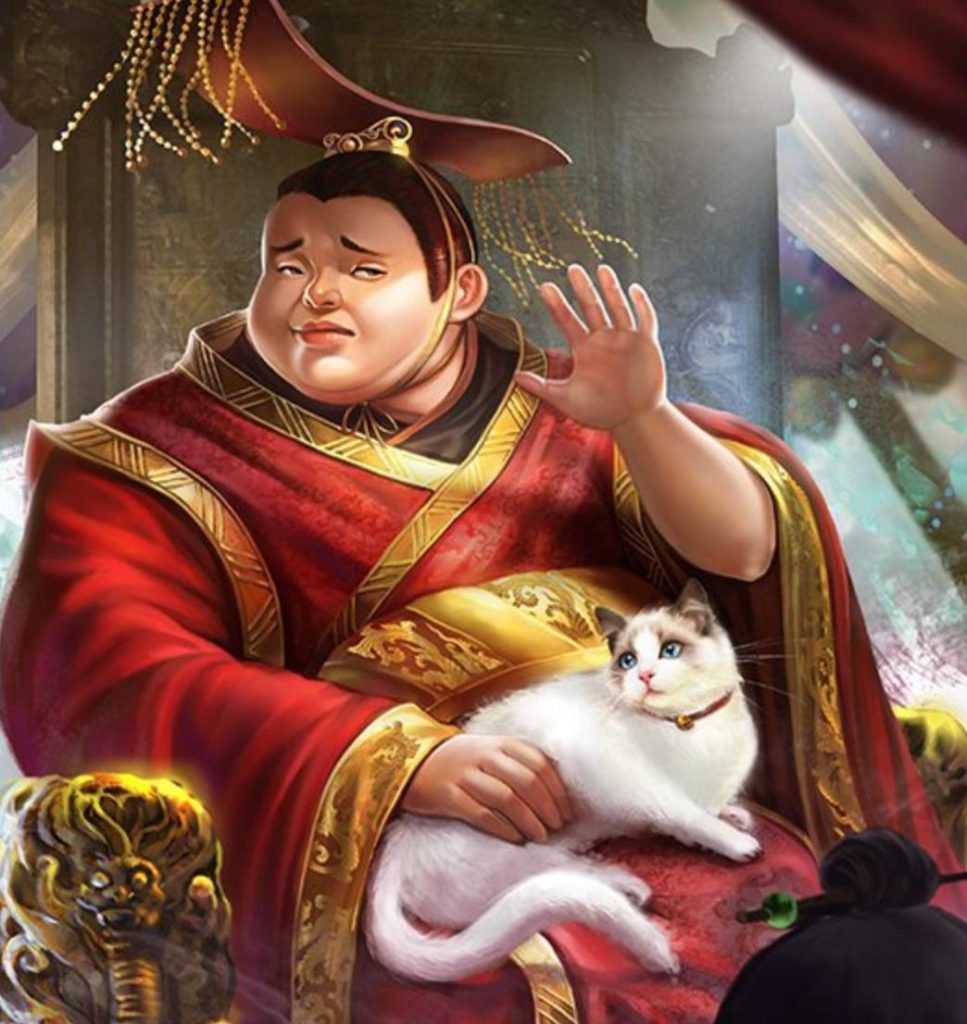
He died in his 30s from eating too much cantaloupe.
New South Korea president may be a nail in the coffin for North Korea engagement
Soon after elected (with strong US support), His popularity dropped drastically. He immediately followed 100% American establishment policy: he openly saluted the US flag, he completely destroyed relations with North Korea and (of course) Korea's largest revenue partner, China. He openly endorsed Asian NATO, Japan, and is against Russia. Since he came to office he has done nothing that helped to revive the Korean economy. In fact, through his actions, he is in the process of destroying the foundation of the Korean economy. And already Korea is starting to economically collapse just like the rest of the collective West are. He may be the next Abe and Zelensky
Withdrawing from China failed. Apple turned to Chinese manufacturers for help.
My personal knowledge and understanding is: 1) Apple is exploiting its suppliers via its volume and keep pressing their margin year on year; 2) to support apple volume, these apple supply chains have to expand their plant, production lines, and stock up materials to meet apple demand ; 3) however, Apple with the crusader DNAs showing no mercy to its supply chain partners, once apple failed in pressing down the prices the following years, Apply will look for alternative suppliers and suddenly cut off the existing one, resulting in the other party running a lost or without profit after years of hardwork supplying Apple. 4) my understanding is Apple seeking profit increment of 11% year on year by selling higher prices to retailers and squesting supply chains; 5) as such apple without any factory enjoying 70% profit while the rest of apple partners sharing the other 30% 6) so, there are many Chinese supply chains decided not to deal with apple anymore. 7) so, Apple openly announced to move supply chain elsewhere, particularly Vietnam. But Vietnam doesn't has the support industry like China, and the workers productivity is not as efficient as China. In addition, Vietnam infrastructure is not up to the Chinese standard to support mass industry expansion. So, now Apple finally forced to return to China for help.
SpaceX Poised To Downgrade “Starbase” R&D Facility
“As far as anything being launched directly to space to the moon or Mars, that’s more than likely not going to happen here.”

The real reason for this is the fact that SpaceX requires Chinese and Russian components and these are no longer available. -MM
As the current testing grounds and launch site of SpaceX’s massive Starship — a fully reusable rocket that very well may be the most powerful in the world — “Starbase” near Brownsville in South Texas, attracts plenty of space enthusiasts that want to catch a glimpse of the titanic rocket in action.
But to their dismay, that privilege could soon end, National Geographic reports, with SpaceX CEO Elon Musk hinting that the space company could eventually move operations to the Florida Space Coast.
“Everybody down here, Brownsville and the whole valley, was expecting to see that this was going to be the Gateway to Mars,” Louis Baldera, a local resident known to his tens of thousands of online followers as LabPadre, and who has closely been following SpaceX’s operations, told the publication.
“As far as anything being launched directly to space to the moon or Mars, that’s more than likely not going to happen here,” he added. “I think that’s going to bum some people out.”
Employees at the facility, who chose to remain anonymous, also told Dallas Express News this week that they no longer believe that Starbase will be the “Gateway.”
That’s in large part because SpaceX and the Federal Aviation Administration have been embroiled in an ugly battle over granting approval for orbital test flights for Starship, with the FAA citing environmental concerns and delaying their decision on multiple occasions.
“I guess our worst-case scenario is that we would be delayed for six to eight months to build up the Cape launch tower and launch from there,” Musk said at a February press conference, when asked what would happen if the FAA required a more extensive environmental review.
Permission was eventually granted last month to carry out the inaugural orbital test flight — as long as SpaceX complies with over 75 environmental provisions.
If operations were to move to Florida, that’s not a prospect that’s likely to sit well with Brownsville residents, especially given the potential consequences on the local economy such a decision could have.
After all, SpaceX is the biggest employer in the city.
“I didn’t know any of those plans beforehand,” Jessica Tetreau, the Brownsville city commissioner, told National Geographic. “What startled us was when we heard the timeline and how they would have to start moving things to Florida.”
SpaceX already started building a Starship launch tower in Florida last December and more recently added its second segment in June.
With the FAA breathing down their neck and dismay from local environmental groups growing, Starbase could be losing its desirability as a launch location.
Of course, that wouldn’t mean a complete pull-out. The facility would most likely be used for less glamorous research and development purposes, as Musk stated at the February conference.
While it’s still mostly speculation at this point — it’s still not a given that SpaceX will move operations — hopefully it won’t have too much of an economic impact on the region.
From HERE
Sweet Potato Pie
The perfect Sweet Potato Pie recipe! Made with a tender and flaky, buttery pie crust and a lightly spiced, perfectly sweetened, browned butter sweet potato pie filling.
Then you have your choice to top with sweetened whipped cream or a toasted homemade marshmallow topping!

Sweet Potato Pie
If you like pumpkin pie you’ll love sweet potato pie. They’re very similar in taste but this recipe is made with fresh, baked sweet potatoes (instead of canned pumpkin) and it includes browned butter so you know it’s going to be good!
There are a few steps to the process of making it but it’s worth every step once you get to taste this luscious pie.
So What Makes the Best Sweet Potato Pie Recipe?
So I learned a few things in testing and creating this recipe:
- Blind baking the crust will keep you from ending up with a soft and gooey pie crust.
- Using baked sweet potatoes instead of boiled sweet potatoes concentrates their flavor rather then ending up with water logged boiled sweet potatoes.
- Browning the salted butter adds adds some depth of flavor to the pie filling. Salted browned butter and sweet potato were made to go together (have you tried my browned butter mashed sweet potatoes yet?)
- Keeping it light on the spices lets the sweet potato flavor shine.
- I personally preferred the classic texture of using mashed by hand sweet potatoes vs. those pureed in a food processor.
- The lightly caramelized flavor of evaporated milk was preferred to the flavor of milk or cream.
- Tent pie crust edges with foil to prevent over-browning.
- And being careful not to over-bake the pie prevented deep cracks from happening (but if they do no big deal, just cover with the topping).
This is easily my favorite sweet potato pie recipe! And I prefer the marshmallow topping for that nostalgic flavor combination, plus I feel that’s what will really set it apart from pumpkin pie but feel free to use either whipped cream or marshmallow topping.
If you use the marshmallow topping you’ll want to prepare and toast it when it’s time to serve (which is the only drawback), so it’s nice and fluffy.
Sweet Potato Pie Ingredients:
- Unbleached all-purpose flour – this is used to make the base of the pie crust. Standard bleached flour will work too if that’s what you have, unbleached just has better flavor.
- Granulated sugar and brown sugar – the white sugar is used in the pie crust to add a faint sweetness and the brown sugar is used for the filling. The added molasses of the brown sugar pairs perfectly with the sweet potato flavor.
- Salt – this brings out the flavors of the pie crust and filling so it doesn’t taste flat.
- Unsalted and salted butter – unsalted butter is used in the pie crust (unsalted butter stays cold better), and salted butter for the filling. Salted browned butter tastes so much better than unsalted.
- Ice water – be sure to add lots of ice to the water, stir and rest before you use it. This helps the butter stay cold so you end up with a flaky crust.
- Sweet potatoes – I like to use red garnet variety. Other orange varieties work as well but don’t use white or purple sweet potatoes.
- Evaporated milk – I like to use the small 5 oz. can so I don’t have leftover but if you only have a larger can that will work but be sure to measure amount listed.
- Eggs – this helps bind the pie filling together and make a custard type filling. They are crucial to the recipe.
- Cinnamon, nutmeg and ginger – with the ratios here I recommend sticking with each separate spice rather than using a spice blend.
- Vanilla extract – this adds another faint background flavor in the pie. Use real vanilla for best flavor.

How to Make Sweet Potato Pie Filling:
- Prepare pie crust dough. Chill, roll, shape and chill. Blind bake.
- Bake sweet potatoes until soft.
- Brown butter.
- Prepare filling and pour into crust.
How Long to Bake Sweet Potato Pie?
- Bake until pie edges are set and center just wiggles slightly, this will take about 40 – 50 minutes at 350 degrees.
- Let cool at room temperature 2 hours. Serve or chill (I prefer it served cold).

Can I Make It in Advance?
This pie can be made 1 day before serving. Store in the refrigerator. Wait until the day of serving to prepare topping.
Can I Use Canned Sweet Potatoes or Yams?
For best flavor and pie consistency I recommend using fresh sweet potatoes. It’s almost just as easy, just baking and scooping out the flesh – no peeling and chopping.

TSMC Wins Legal Battle Against Employee Who Violated Contract & Moved To China
This is NORMAL in the industry. You routinely sign Non-Compete agreements locking you out of a job with a competitor once you leave the firm. These contracts are rarely enforced, however, but for a high visibility industry, it could be problematic. I dare say that the Taiwanese laws do not apply to Chinese residents. And this might sound frightening, but really, it's just a bunch of "hot air". This happened in 2016. Since them, entire busloads of engineers left for China.-MM
A former procurement manager for the Taiwan Semiconductor Manufacturing Company (TSMC) has been fined NT$2.5 million as part of a violation of his non-compete agreement with the chipmaker. The former employee, Xue Zongzhi, had left his role at TSMC to take up a similar position at a Chinese wafer supplier, which violated his agreement with TSMC the company had argued. In response, Mr. Zongzhi retorted that his experience in procurement was not subject to a non-compete agreement and by taking up a role at his new employer, he had leveraged his skills acquired through time spent in the industry.
The report comes courtesy of the Taiwanese publication United Daily News (UDN) and it states that Mr. Zongzhi’s appeals against the Taiwanese court’s decision have been rejected. The controversy surrounding his departure started in 2016 when he left TSMC to join a Chinese wafer company within months of his departure.
Mr. Zongzhi had been managing TSMC’s purchasing department since 2011 and chose to leave the role in July 2016. As per the UDN, his contract with the company prohibited him from taking up similar roles at competing firms which were defined as companies that are engaged in “semiconductor wafer manufacturing and services.” However, in December of the same year, the executive took up a role as the vice president of procurement at the Yangtze River Storage Company which is a part of the Continental Ziguang Group and owned in it entirety by the Wuhan Xinxin Integrated Circuit Company.
The Wuhan Xinxin Integrated Circuit Company (XMC) is a direct competitor of TSMC, argued the company, since it also manufactures and sells semiconductors. As a result, the Taiwanese fab sent a legal notice to Mr. Zongzhi, asking him to resign from his new position, but failed to receive a response.
Subsequently, TSMC sent him a notice to pay damages equal to NT$15.5 million in a lawsuit. The suit also claimed that the former manager had leaked TSMC’s trade secrets such as its order contracts, bids and product prices as part of his new position.
However, Mr. Zonghzi insisted that prices and bids were not proprietary information and TSMC does not use them to compete with other companies. He also outlined that his experience over the years is not TSMC’s intellectual property and that XMC is a small fish compared to TSMC, which is the world’s largest contract manufacturer of semiconductors and chips.
As the UDN reports, the court sided with TSMC in the affair, and it ruled that contracts, bids and prices are sensitive information which is indeed used by the chipmaker to compete with rivals. It also held that Mr. Zhongzhi’s contract with TSMC did prevent him from working for other chip manufacturers, but that he was free to work with non-chip manufacturers. Finally, the court also rejected the manager’s claim that XMC is not TSMC’s rival, as it stated that the reality is to the contrary as both engage in manufacturing semiconductors.
However, it reduced the damages owed to TSMC since the company was unable to prove how Zongzhi’s departure led to losses. TSMC’s share price has grown consistently since the former manager left the company, and its profits have also grown significantly. Subsequently, Zhongxi was sentenced to pay NT$2.5 million in damages to his former employer.
The revolution industry and how the Hong Kong police were targeted
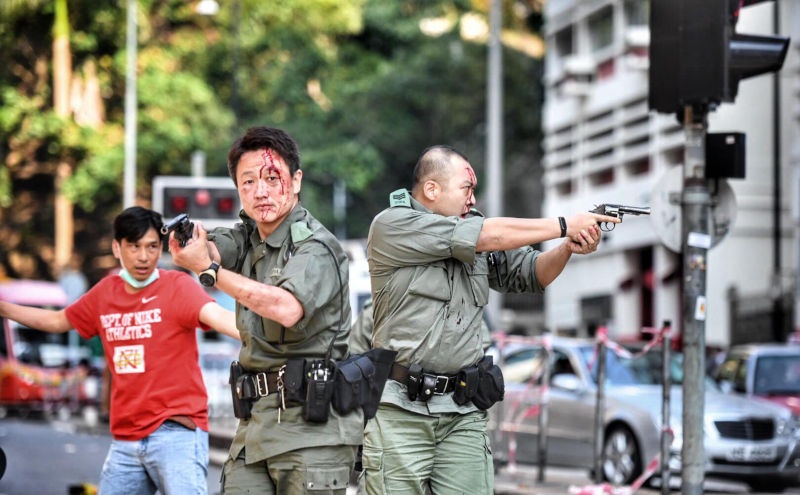
Professional destabilisers worked with activists for years to distort reality in Hong Kong, writes Phill Hynes. And there’s a specific reason why the destruction of the reputation of the city’s police became a key target.
When the protests in Hong Kong broke out in 2019, they became the focus for sustained and intense international media attention.
The saturation-level coverage of Hong Kong blanked out other major events elsewhere in the world—even though the other stories were often far more newsworthy, involving larger events with far more fatalities. Populism and right-wing politics were moving center stage in Europe, the Middle East was on fire, as was South America.
In other riots around the world, the military were called out and many protesters’ lives were lost. In contrast, Hong Kong police killed not one protester in six months of violent protest.
Yet the city received the sustained glare of the global media circus—and unrelenting coverage which was reprehensibly biased, particularly against the police.
In particular, not one mainstream media outlet reported the quickly obvious fact that the protests were organised, well-funded, and clearly using a long list of specialised techniques associated with a shadowy sector known as “the revolution industry”. It’s worth setting that right.
Doing the army’s job
In particular, one key fact was rarely acknowledged: Under-prepared, under-experienced Hong Kong police officers found themselves forced to do an incredibly difficult job that was done everywhere else by fully equipped armies with military vehicles and an bottomless supply of lethal weaponry.
Who was standing in the shadows, stirring up the protests? No one, apparently. Just try and find a single mainstream media article that mentioned the Albert Einstein Institute (AEI) and/ or the Center for Applied Non-Violent Actions and Strategy, (CANVAS). Who are they?
This topic will be considered in three parts. First, we’ll look at some of the players in the revolution industry. Second, we’ll look at the strategy and tactics used in Hong Kong. Third, we’ll look at their focus on delegitimising authority, and particularly the city’s police force.
Part 1: The revolution industry
There have been many civil disobedience movements, uprisings, colour revolutions and protest movements in the past 20 years—and several organisations that have had direct involvement in the majority of these movements. The AEI, founded by Gene Sharp in 1983 in the US, has been at the forefront of inspiring hybrid wars. CANVAS was created in 2004 in Serbia by Srđa Popović and the CEO of Orion Telecom, Slobodan Đinović, former founding members of Otpor, the precursor to CANVAS, the group that toppled Serbian president Milosevic. There are a number of other groups in this area, such as the Oslo Freedom Foundation (which, despite the name, is headquartered in New York). The Azov Battalion from Ukraine sent a team from its Gonor Group to Hong Kong in 2019.
The revolution industry developed techniques now associated with various terms, including “psyops”, “colour revolution”, “hybrid war”, and so on. In simple terms, the western powers trigger a battle in which conventional physical fighting is supplemented with an underhand media saturation campaign to humanise one side and demonise the other. This causes the general public to take the pro-US side and enables politicians to easily syphon public funds to the coffers of arms-makers.
No conspiracy theory
It is no conspiracy theory to talk about their involvement in the Hong Kong protests. In a 2014 BBC report from an Oslo Freedom Foundation meeting, street protest specialists admitted they had been working to prepare Hong Kong activists for almost two years, and had distributed materials to a thousand activist leaders in the city.
Furthermore, Hong Kong protesters have been widely observed using revolution industry techniques (such as marginal violence) and even admitted to it.
The Albert Einstein Institute (which has no direct connection with the scientist of that name) was founded by Gene Sharp, a US academic specialising in street protest strategies and regime change. In 1993, he published the book From Dictatorship to Democracy. Updated versions of the book are accompanied by a tactical training manual with 198 meticulously thought-out steps within structured sections.
Make it seem home-grown
AEI and CANVAS both encourage localisation by activists: indigenous elements are seen as a key component of success. The protests need to look home-grown and spontaneous, but this can be superficial. As we have seen, journalists will not dig a centimetre below the surface to check.
The CANVAS organisation has its own publications designed for social movements and revolutionaries, including:
- Canvas Core Curriculum: A Guide to Effective Non-violent Struggle
- Making Oppression Backfire
- Non-violent Struggle: 50 Crucial Points
CANVAS has merged its tactical guidelines with those of the AEI to create a “manual of chaos” for protest movements that is shared freely among interested parties. Moreover, a plethora of US sponsored NGOs offer training to organisations, leaders and movements on the techniques featured in the manuals, and on how to set up, fund, recruit, manage, and run protest movements and revolutions. This is now happening on an industrial scale. CANVAS grew out of the Serbian protests.
CANVAS played a different role to AEI in Hong Kong. If AEI was the inspiration, providing a philosophical and strategic basis for the orientation of a movement, then CANVAS was the tactical source or engine to drive the movement’s objectives. (The initial creation and formation of such movements rests with other NGOs – a topic for another time.)
Part 2: Strategy and tactics
In Hong Kong, which has a very complex political landscape, the protest movement benefited significantly from CANVAS tactical know-how, but CANVAS and their sponsors also benefited from the protesters. Sharp wrote: “Movements adapt the core principles and localise them to their particular circumstances on the ground.” In Hong Kong, protesters were very adaptive, refining techniques, and adding new ones.
As a result, the Hong Kong protest movement, working with a supportive western media, was hugely successful in distorting reality. Out of all the protests around the world at that time, the authorities in Hong Kong were least violent, and most likely to continue to hand out protest permits – yet the impression given was the opposite, with the Hong Kong police painted as brutal and the authorities being characterised as unwilling to allow public demonstrations.
This level of success in news manipulation meant that Hong Kong became a benchmark for tactical developments for other revolutionary movements globally, and an incubator for enhanced tactical learning, with new and modified tactics being visibly exported to other countries. The revolution specialists could add to their list of techniques.
Six stage escalation
In the now combined AEI and CANVAS chaos manual, there are six distinct stages to achieve the movement’s objectives. They start from the final objective and work back in a system known as “Inverse Planning”. (This is critically important to understand the Hong Kong protest movement, as they had a clearly established timeframe for attainment of their objectives.)
The six key stages are:
- Non-violent Protest and Persuasion
- Social Non-cooperation
- Economic Non-cooperation – Boycott
- Economic Non-cooperation – Strike
- Political Non-cooperation
- Non-violent Intervention
Why were the Umbrella Movement techniques cast aside for an alternative system? Evolution, baby! Not to mention a revised agenda. These changes were not in any way spontaneous, or reactionary. The new techniques were planned and designed to take control of the messaging and control the communications, assisting in building a movement.
Long term planning
Indeed, the evidence points to the 2014 Umbrella Movement being a stepping stone in a much larger game plan. The architects knew in 2012 when they were planning for Occupy Central that it had a limited possibility of success in achieving the ultimate objectives. The time was not right for a bigger assault. Using their own inverse model, the target now looks to have always been for a bigger event between 2019 and 2022. As Dr. Simon Shen put it in November 2019 in the publication Think China: “Hong Kongers need to be in it for the long game.”
Alignment of conditions
What 2019 presented was the alignment of conditions, circumstances and events that lead to the escalation and implementation of the next phase of the program.
According to the CANVAS model of non-violent protest communications, control of communications, harmonising messaging, security and delivery are critical to success. Tactically, it does not matter how strong you are. If your control of communications is flawed, you will lose. The Hong Kong government was surely in the right to clamp down on the huge amount of violence and destruction of public facilities – but with no communications skill of its own, and the media arraigned against them, the constructed narrative portrayed them as the bad guys, and continues to do so.
Part 3: Removing a pillar
Gene Sharp’s theory of power identified the pillars on which governments retain their authority. These became strategic targets for attack, so that governments can be undermined, toppled, removed and ultimately replaced. See the image below for reference.
The process of undermining the government in Hong Kong had been started long ago using precisely this strategy. Civil society, education, media, and religion, had long since been penetrated and compromised. However, the city presented a unique opportunity to undermine one of the most important pillars of support – number one in the diagram is the military.
Hong Kong does not have a military. Thus it was a weak point.
In theory, the People’s Liberation Army provides military defence. But leaders in both Hong Kong and mainland China chose not to use them, showing an unexpected level of patience.
For that reason, attacking and destroying the Hong Kong police force’s legitimacy became an imperative. Once such an important pillar starts to crumble, the others will be weakened, and the whole structure will fall. Hong Kong will descend into chaos—or so the powers behind the scenes hoped.
Demonising the police
Thus, there was a clear strategy to demonise and dehumanise the Hong Kong Police Force. When the protests started, activists had but one demand, the abandonment of the extradition bill. However, that was quickly achieved, so the protest continued with its infamous “five demands, not one less” chant.
Even supporters of the protests admitted that the five demands made little sense (and were hard to remember), but the second of the five became the focus. It was the anti-police clause. Initially, it called for an independent body to be set up to review police behaviour. In fact, such a body had already existed for years, and was well trusted by the Hong Kong public.
Nevertheless, this demand was repeated ad nauseam and evolved to call for the jailing of officers and then the complete defunding of the police force itself.
Unexpected onslaught
From the first moment of the first outburst of violence on the evening of 9 June 2019, the police were the direct target of aggression. The police had been expecting large numbers of protesters—but were not expecting the level of violence that came with them, nor the media onslaught that turned attacks on police into attacks by police.
Shocked, the police reacted largely in self-defence and continued to act in this way for the next few weeks, or until it started to become apparent that the protests were not spontaneous and were coordinated and well-planned. The protest architects had a hidden objective: the Hong Kong police force had one of the best reputations of any regional police force in Asia. This had to be attacked, undermined and discredited as a matter of urgency.
‘Get the police to hit you’
One method was the use of Marginal Violence Theory. Protesters use aggression to provoke the police into any type of response, which the media could then present as police attacks on peaceful protesters. This created escalating hostility to the authorities. One protester, Fred Chan Ho-fai, even described the strategy in a 2019 New York Times article called “A Hong Kong Protester’s Tactic: Get the Police to Hit You.”
Chan wrote: “Such actions are a way to make noise and gain attention. And if they prompt the police to respond with unnecessary force, as happened on June 12, then the public will feel disapproval and disgust for the authorities. The protesters should thoughtfully escalate nonviolence, maybe even resort to mild force, to push the government to the edge.”
Creating hate (“disapproval and disgust”) for ordinary men and women trying to do their job became the deliberate intention of large bands of masked protesters carrying petrol bombs for many months, with the media eager to play their part in the process. Protesters were directed to provoke confrontation with the police at every available opportunity. To further blacken the name of the force, they brought in school pupils, young people, mothers with children, and the elderly, for photo-opportunities.
Police not blameless
But let’s be fair. It is inevitable in such a long and sustained conflict that individuals in the police force did likely respond on occasion more aggressively than perhaps they should have. Tear gas was used at times when it was not necessary, and sometimes they seemed to have forgotten that it was not an offensive weapon, but a tool for crowd control. Rubber or plastic bullets were used incorrectly on too many occasions, firing directly at targets as opposed to ricocheting off the ground. Some individual officers behaved deplorably in the conduct of their duty.
However, it is all too easy for the layman to judge them harshly from the comfort of a secure, remote perspective.
The present writer has served front and centre in such situations, while bricks, bottles, Molotov cocktails and all manner of improvised objects rain downed upon us. But of course, as an officer of the authorities, you have to stay within the limits of professionalism and discipline. The throwers of petrol bombs have no such constraints.
By comparison, restrained
Hong Kong soon descended into months of sustained protests, rioting, arson attacks, destruction of property and businesses owned or associated with mainland Chinese. Protesters threw thousands of Molotov cocktails, committed vicious assaults against civilians, and there were undeniable attempts to harm or kill members of the police force. Compared to how other countries’ police forces would have behaved, the Hong Kong contingent were, by and large, remarkably restrained.
The media played an irresponsible role in the nurturing and cultivation of this narrative. “Citizen Journalists” (some as young as 12 years old) would at times insert themselves between the police and rioters, thereby making themselves willing victims of police actions. This would be duly reported as police brutality. Video footage was carefully edited to show the police as the aggressors. Rarely did the truth of a particular situation make it into the mainstream media. The wanton violence of the rioters would be omitted, leaving only the apparent brutality of the police. Even photographs of an innocuous interaction between public and police would be misrepresented as evidence of barbarity.
Police become focus
Since it was plainly ludicrous for that level of destruction to be justified as a call for the abandonment of a bill that had long been abandoned, the chorus of calls for the disbandment of the Hong Kong police became the main theme of the protests. However, when protest leaders were questioned on how to proceed with this, there were no answers.
None of this made any sense. But it didn’t have to. The protesters had taken the strategic objective of removing a key pillar of support from the government. The Hong Kong police force was not merely collateral damage: destroying their legitimacy was one of the objectives of the protests.
Ultimately, it failed
Ultimately, the campaign to cause Hong Kong to descend into chaos, goading the PLA into take control, and killing the “one country two systems” policy, failed. The Chinese government was too patient.
No matter. The Western media still blamed China for everything that went wrong, and refused to acknowledge any involvement by outsiders. But in Hong Kong itself, people on all sides of the debate did become more fully aware that there were underhand forces at play, and realised that their home was being used as a political football. For them, the national security law makes much more sense than the international media will acknowledge. You have to have tools to deal with wrongdoing when the games are being played below the surface of dark waters.
And the people of Hong Kong have a continuing concern, too. The game, they worry, may not be over. For the international media, the revolution industry doesn’t exist at all. For many traumatised citizens of Hong Kong, it is very real indeed. And the forces behind it are still very much at work.
Phill Hynes is a geopolitical analyst based in Hong Kong and specialising in Asian affairs.
Reposted from https://www.fridayeveryday.com/
Japan’s “chip giant” Sakamoto Yukio: was collapsed by the United States and South Korea, and went to China for revenge at the age of 72
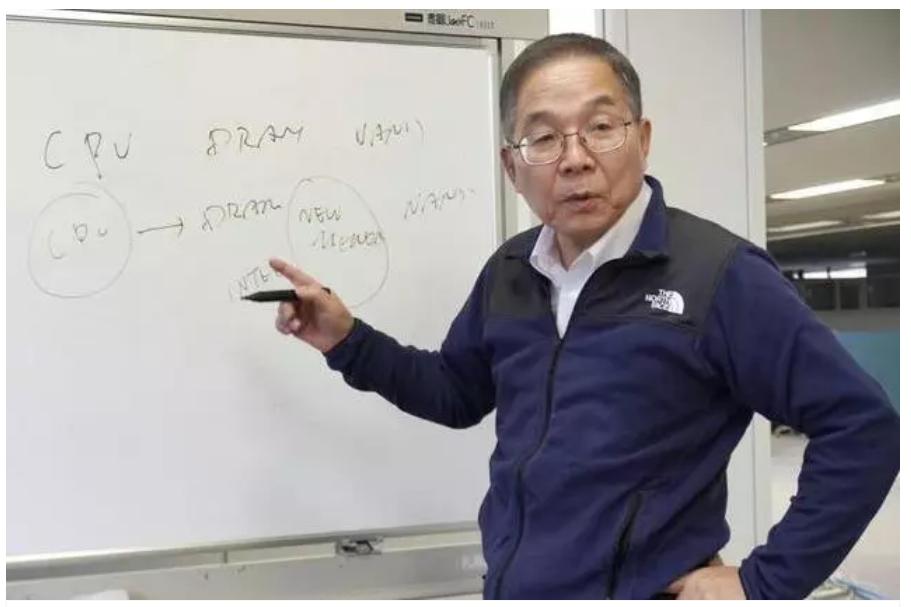
In Chinese, From HERE
The Sistine Chapel of the ancients.
This latest stunning archaeological discovery from deep in the Amazon Rainforest has been referred to as The Sistine Chapel of the ancients.
Nestled between towering limestone table-top mountains that ring the horizon and dotted with immense limestone outcrops is a sheltered natural basin in the Amazon Rainforest, this isolated paradise is crisscrossed by rivers and amongst the most biodiverse places on Earth.

For centuries this strange sheltered basin was a contested landscape, since 1960 FARC guerrillas have controlled the region and much of the surrounding Columbian countryside.
Then in 2020, a team of Archaeologists from the University of Essex in the UK, and the National University of Colombia, carried out an expedition to the depths of this mysterious basin and what they discovered was so unbelievable that it was kept secret and only announced in 2021.
Impatient readers start grumbling - ‘What the heck Henrey, tell us what they found, damnit.’
Patience my young padawans, anyway, roughly 13-thousand-years-ago, a mind-bogglingly long time ago, some ancient humans reached this sheltered paradise that is guarded by immense walls of limestone mountains and rich with life.
These ancient humans settled down claiming this region for themselves and built yet to be discovered settlements that today lay buried beneath the dense Amazon Rainforest.
However, these Ancients did leave us something utterly incredible, and it was finally found in 2020, after 12,500 years of waiting, humans have once again found The Sistine Chapel of the ancients.

What these Ancients created would have taken generations of continuous work, I suppose what I’m saying is this wasn’t just some random caveman painting his willy on a wall or sketching a few doodles of animals or stick people.
What the Archaeologists found was an eight-mile-long wall of tens of thousands of prehistoric paintings, that include everything from extinct Ice Age animals, humans hunting and dancing, detailed depictions of edible plants, intricate shapes and flowing complex patterns.
“One of the most fascinating things was seeing ice age megafauna because that’s a marker of time. I don’t think people realise that the Amazon has shifted in the way it looks. It hasn’t always been this rainforest. When you look at a horse or mastodon in these paintings, of course, they weren’t going to live in a forest. They’re too big. Not only are they giving clues about when they were painted by some of the earliest people – that in itself is just mind-boggling – but they are also giving clues about what this very spot might have looked like: more savannah-like.” - Al-Shamahi.

Honestly, just thinking that there is this 8-mile long cliff face in the depths of the Amazon rainforest that was painted by ancient humans more than 12,500 years ago, and it is all still there, is simply bonkers.

Bonkers, no other words, just bonkers, the age of exploration and new discoveries is still alive.
The below image is one of my favourites, I had to zoom in and crop the original, so I know it doesn’t show all the paintings on this section of the wall, but just take a moment, it’s fascinating.
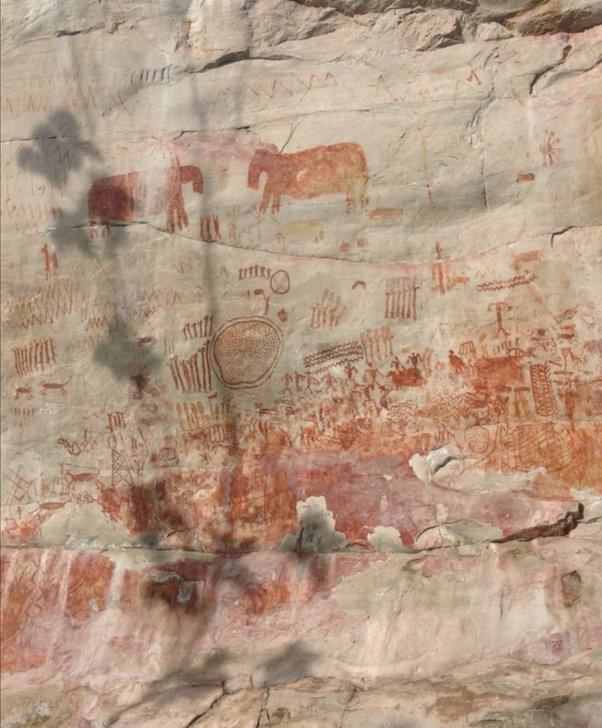
This single image shows the Ice Age megafauna these ancient humans would have hunted, two van-sized Mastodon dominate the top left of the image, while near the middle left is what looks like a large wooden tower, which was likely built to enable these ancient people to paint 20 foot off the ground and undertake this monumental generational endeavour, mile after mile.
There is another wooden tower clearly depicted to the middle right, honestly, so far we only have a handful of images and the entire 8-mile-long wall is covered with complex paintings, it will literally take the next decade to fully document and photograph the paintings along the entire wall.
Personally, I believe it is very likely there could be ancient stories depicted on this wall or lessons, because these ancient people spent generations over hundreds of years painting an 8-mile long wall in detail, creating giant wooden towers to paint every itty little bit of their canvas, I highly doubt it was all just meaningless doodles.
Q&A: Indonesia’s defence minister on security in the Asia-Pacific
At the Shangri-La Dialogue in Singapore, Indonesia’s Defence Minister Prabowo Subianto tells Al Jazeera he is confident the leaders of the US and China will be ‘wise’.
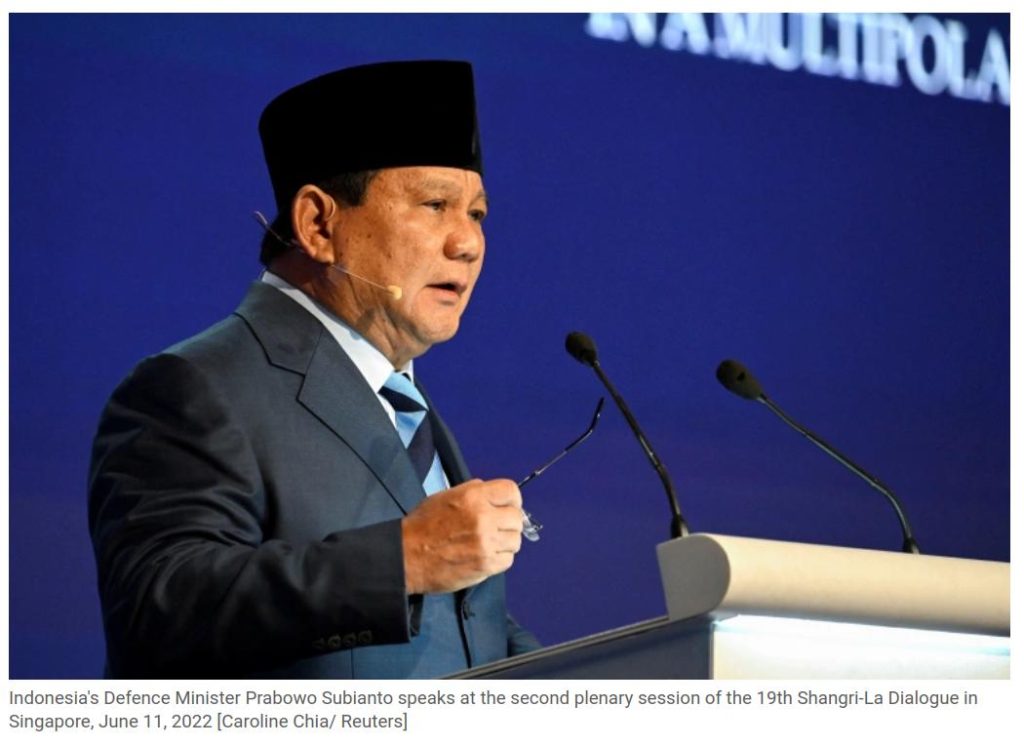
Singapore – As defence chiefs from around the Asia-Pacific gather in Singapore for the Shangri-La Dialogue, much of the focus has been on growing tensions between the United States and China.
The three-day security summit organised by the London-based International Institute for Strategic Studies is considered the most important defence-related conference in the region. This year, more than a dozen defence chiefs from around the world, including the US, China, and more, are attending.
After a two-year hiatus, the event has returned and attracted high-profile guests, including the Indonesian defence chief and former presidential candidate Prabowo Subianto.
The former lieutenant general met with Al Jazeera’s Jessica Washington during the Shangri-La Dialogue, sharing his thoughts on the war in Ukraine, and modernising Indonesia’s military arsenal.
Al Jazeera: In your speech at the Shangri-La Dialogue, you spoke about the “Asian way”. Where does Indonesia fit into that idea?
Subianto: That is our culture that we always try to resolve problems with negotiations, with interactions, with engagement, and we keep on engaging, we keep on discussing until we come to an amicable, mutually beneficial solution. That is the Asian way.
And it is the Indonesian way. We call it musyawarah mufakat (discussion to reach a solution) and we call it gotong royong (working together). We look for common interests; if we always talk about the differences, we might not even meet.
Al Jazeera: A big focus during this summit has been on US-China tensions. What do you see as Indonesia’s role in dealing with those tensions?
Subianto: We are in the real and actual position that we respect and we are friendly, and we are good friends. We have good cooperation with both powers — I have said that many times. The United States has helped us many times, in our critical moments. But China has also helped us. China has also defended us and China is now a very close partner with Indonesia. And actually, China has always been the leading civilization in Asia. Many of our sultans, kings, our princes in those days, they would marry princesses from China. We have hundreds of years of relationship.
So it’s natural. So, you asked me, what is our position, as good friends we try to be, maybe a good common bridge. If not, then we maintain the good relationships.
And we are convinced that both powers will have wise leadership. I’m optimistic on that front, many people, of course, understandably are concerned, and yes there are dangers. But I believe the leader of China will be wise, and the leader of the US also. They are great powers. The world will expect them to give us good leadership.
Al Jazeera: What about some of the aspects of Indonesia-China relationships, where there are differences of opinions… for example the South China Sea. How do you navigate those challenges?
Subianto: As I said with good relations, good communication with direct contacts, we can come to an amicable understanding that’s mutually beneficial.
Al Jazeera: The US Secretary of Defense, earlier in the speech mentioned Indonesia, specifically the naval exercise called Garuda Shield…
Subianto: Garuda Shield has been going on for 14-15 years, but we have also exercises with other countries. We also plan to have exercises with China.
Al Jazeera: The US Secretary talked about the situation in Ukraine, and you mentioned in your speech, you said it is a very sad situation. Do you have anything else to say on that?
Subianto: Historically, geopolitically, there are always two versions to a story. Indonesia, as you know we voted with the many western countries in opposing the invasion of Ukraine — that’s our position on the invasion.
But once again, I would like to say that Russia has been a very good friend to Indonesia all these years. We have good relations with Russia, they helped us also when we were having difficulties and as I mentioned, a friend in need is a friend indeed. Never forget friends who helped you. That’s our position.
We say all the great powers must be respected, and their concerns must be respected.
Al Jazeera: You have made it your priority to modernise Indonesia’s defence capabilities, how is that going?
Subianto: It is going well, of course, everything needs what I call an incubation period, we can’t go to the supermarket and buy defence equipment. I would say it’s going well, of course, I’m pretty impatient, I wish it could go faster, maybe if I have a magic wand.
Al Jazeera: Following your speech, you were asked about the region and you said each country can make their own decisions. Anything further to say on that?
Subianto: Basically that’s the right of every country to assess their own security needs. So I cannot tell the Australians or the British what they should do. I also don’t want them to tell us what to do. We respect each other.
Al Jazeera: Can I ask for your views on the situation in Myanmar?
Subianto: I think Indonesia’s position is very clearly do not recognize the regime in Myanmar
Al Jazeera: Let’s look at a domestic issue in Indonesia. There is discussion about the plan to create new provinces in Papua and some international human rights groups have raised concerns about security implications and the impact on human rights.
Subianto: There’s always this, I would say double standards or triple standard, anything countries like Indonesia do. They always try to emphasise the possibility of human rights abuses. I think our needs, we have vast areas and that has been in discussion and planning for many years.
Al Jazeera: Indonesia’s foreign policy has long been guided by the phrase ‘free and active’. Do you see Indonesia as having a leadership role among countries that take a neutral stance?
Subianto: Leadership is not something that we can award to ourselves. I think the best form of statecraft in my opinion is to get your own house in order. If we take care of our own house in good order, people will look to us.
Al Jazeera: Speaking of leadership, your plans for 2024 — Are you planning to run for the presidency?
If I am needed, if there is strong support for me, then I have to put myself at the service of my people and my country.
U.S. Wants China’s SMIC to Stop Making 14nm Chips
When the U.S. Department of Commerce (DOC) restricted access of China’s largest contract chipmaker Semiconductor Manufacturing International Corp. (SMIC) to fab equipment used to make10nm-class chips, it was considered a tough but not too severe move. Now the U.S. government is mulling restricting China from producing logic chips using a 14nm-class fabrication process.
The DOC is examining the possibility of prohibiting the exportation of chipmaking tools to companies in China that can make logic chips using 14nm-class manufacturing nodes and thinner, according to a Reuters report that cites five people familiar with the matter. The only company in China currently producing chips using its 14nm fabrication process is SMIC, which has been doing so since late 2019.
What is not completely clear from the report is whether the DOC wants to ban SMIC from getting tools used to make semiconductors on its 14nm node and thinner, or if it wants to ban SMIC from getting any tools at all because it is capable of making chips using its 14nm technology.
Currently, American companies can sell equipment good enough to build 14nm chips to SMIC without any export licenses from the DOC and other agencies. If the U.S. government decides to restrict SMIC’s access to advanced chipmaking tools, companies like Applied Materials and Lam Research will have to apply for an export license every time they deal with SMIC. The application will be reviewed with a presumption of denial.
An official for the U.S. DOC did not confirm that the department was discussing 14nm-related export restrictions for SMIC but confirmed that it was continuously reviewing the ongoing situation.
“With respect to semiconductor-related export license applications in particular, (Commerce) and the other reviewing agencies … consider a variety of factors in making licensing decisions, including the technology node for the proposed export,” the spokesperson for the Department of Commerce is reported to have said.
Because SMIC could not access extreme ultraviolet (EUV) lithography tools due to the Wassenaar Arrangement, the firm began the development of its 12nm, N+1, and N+2 process technologies that relied purely on deep ultraviolet (DUV) lithography and were aimed primarily at inexpensive chips that did not require a high transistor density. Now, both N+1 and N+2 nodes are considered sub-10nm fabrication processes, so SMIC had to cancel their development.
When SMIC was barred from manufacturing tools advanced enough to make chips using its 10nm-class (and sub-10nm-class) nodes in late 2020, the company said it would focus on developing advanced packaging technologies to make sophisticated multi-chiplet designs out of tiles produced on 14nm and thicker nodes. That would enable Chinese chip designers to build sophisticated and capable processors with tens of billions of transistors even without using an advanced process technology. In addition, the company announced multi-billion dollar expansion plans that would triple the output of chips made on advanced nodes.
To a large degree, advanced packaging technologies could be SMIC’s way to work around the U.S. export restrictions. As a result, China would gain access to advanced computing capabilities that could be used for military purposes.
The U.S. administration certainly understands SMIC’s options and risks that it brings to America and its allies, so it wants to further crackdown China’s access to sophisticated chipmaking tools.
Article from HERE
PM Anthony Albanese issues warning to China at Quad meeting
The new PM has told China it must remove its sanctions on Australian products if the two countries are ever to improve relations.
So the New Prime Minister of Australia attended the United States QUAD meeting. The QUAD was set up by Mike Pompeo as a Pacific NATO as a military block to "counter" China militarily. During the meeting, the new Prime Minister got up on the podium and listed demands and warnings to China. Here, in this article, the local Australian media reports on his "warnings" and the Chinese retort. -MM
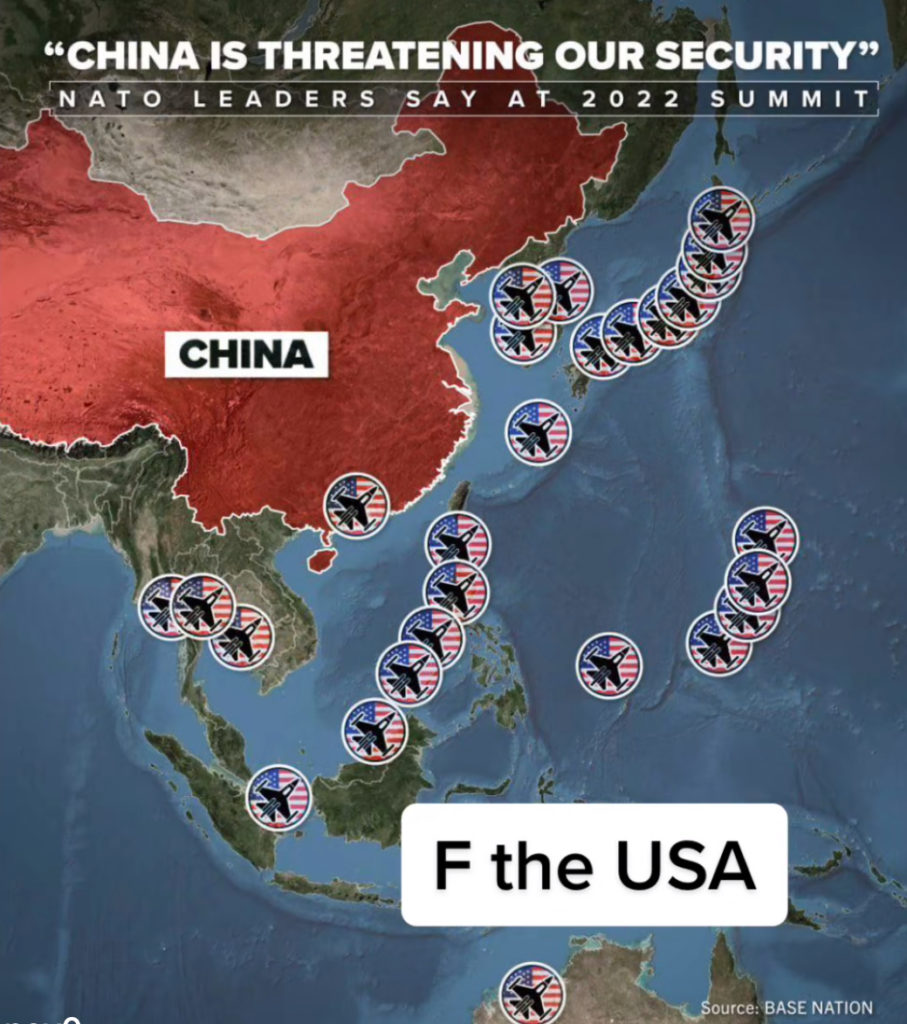
Prime Minister Anthony Albanese has warned China the only way to improve its relationship with Australia is by removing trade bans.
After years of strained diplomatic relations between the two countries, the incoming Prime Minister told the Quad meeting his government, on behalf of Australia, would seek good relations with all countries – but would not be soft on China.
In his address, Mr Albanese urged Beijing to lift trade tariffs it imposed on Australian goods such as barley, wine, coal and seafood.
“Australia seeks good relations with all countries,” Mr Albanese said in Tokyo.
“But it’s not Australia that’s changed, China has. It is China that has placed sanctions on Australia.
“There is no justification for doing that. And that’s why they should be removed.”
Oh really? Eh? China just up and decided to do that without justification. Hum...-MM
Mr Albanese’s first comments as Prime Minister about China comes as he confirmed he had received a letter of congratulations from Chinese Premier Li Keqiang.
The Quad leaders, which include US President Joe Biden, Indian Prime Minister Narendra Modi, and Japanese Prime Minister Fumio Kishida, reaffirmed their commitment to a secure and peaceful Indo-Pacific at the meeting on Tuesday.
In a joint statement, the four leaders directly referenced China’s military expansion in the South China Sea and its claims over Taiwan.
“We strongly oppose any coercive, provocative, or unilateral actions that seek to change the status quo and increase tensions in the area, such as the militarisation of disputed features,” the statement read.
Earlier this week, Mr Biden confirmed the US was prepared to “get involved militarily” to defend Taiwan if China did make good on its threats to invade.
Mr Albanese said there was no change in Australia’s position that there should be “no unilateral change to the status quo” but would not explicitly detail the issue of a military response.
The incoming Prime Minister’s demands of China, and the Quad meeting as a whole – comes as Chinese officials travel to the Solomon Islands to make further security plans.
The security arrangement was also a topic of conversation at the Quad.
From HERE
China lists four criteria to get the Australian-Chinese relationship on track…
- Australia must treat China as a “partner rather than a rival”,
- the two countries must seek “common ground while shelving differences,
- Australia must reject “manipulation by a third party”, a clear reference to the United States and finally
- both countries must build “public support featuring positiveness and pragmatism”.
These four criteria ENRAGED the new Prime Minister…
Anthony Albanese hits back on China’s four demands to rebuild relationship
Anthony Albanese has warned China he won’t be taking orders after Beijing issued four demands to “get the relationship on track”.
Anthony Albanese has warned China he won’t be taking orders over Beijing’s four demands to “get the relationship on track” including not treating it as an adversary.
Over the weekend, China’s Foreign Minister Wang Yi issued Australia’s Foreign Minister Penny Wong with a four-point list of demands to repair the relationship and
Foreign Minister Wang Yi blamed the Morrison government’s “irresponsible” words and deeds for the difficulties in the relationship.
“The root cause of the difficulties in bilateral relations over the past few years was the former Australian government’s insisting on regarding China as a rival or even a threat, allowing its words and deeds being irresponsible against China,” he said.
“It is hoped that the Australian side will seize the current opportunity and take concrete actions to reshape its correct understanding of China, reduce negative assets and accumulate positive energy for the improvement of China-Australia relations.”
It followed a meeting in Bali on Friday between the pair that ended a diplomatic freeze that has dragged on for three years.”
Speaking in Canberra, Prime Minister Anthony Albanese said Australia will continue to co-operate with China where it can but won’t shy away from standing up for the national interest.
“Look, Australia doesn’t respond to demands. We respond to our own national interest,’’ Mr Albanese said.
“I’ll say this. We will co-operate with China where we can. I want to build good relations with all countries. But we will stand up for Australia’s interests when we must.”
China’s Foreign Ministry also said there were four requirements for Australia to improve the relationship.
They included the following demands: Australia must treat China as a “partner rather than a rival”, the two countries must seek “common ground while shelving difference, Australia must reject “manipulation by a third party”, a clear reference to the United States and finally both countries must build “public support featuring positiveness and pragmatism”.
Chinese media has reported that Foreign Minister Penny Wong and her Chinese counterpart agreed to remove obstacles to get the China-Australia relationship back on track.
Asked what obstacles the Foreign Minister agreed to move, Mr Albanese said: “I’m not in a position to listen to what the Chinese media says. I’ll listen to what Penny Wong says about the meeting.”
“It was a constructive meeting. It was just a step forward,’’ the Prime Minister said.
“Australia has not changed our position on any issues. We’ll continue to be constructive.”
“We are engaging in the lead-up to the Pacific island forum, and indeed, ministers (Penny) Wong and (Pat) Conroy are leaving for the Pacific island forum today. This is an important meeting. We know that Australia hadn’t, in my view – we said it very publicly. It’s obvious that we had dropped the ball.
“The deal that occurred with Solomon Islands represents Australia not so much as having a step up in the Pacific, as a stuff-up in the Pacific.”
The Morrison government’s call for a full investigation into the origins of Covid-19 was one flashpoint in recent years as the ban on China’s Huawei from participating in Australia’s 5G rollout and foreign interference laws.
On Sunday, the Coalition’s foreign affairs spokesman Simon Birmingham said China should have taken a stronger position over Russia’s invasion of Ukraine.
”China’s muted response to Russia’s invasion of Ukraine and war on Ukraine has been a shameful thing to see,” Senator Birmingham told Sky News Australia.
”We would wish to see China take a stronger response in that regard.
”What the world would no doubt love to see in relation to Russia’s invasion of Ukraine is for China to show leadership. It would be an enormous opportunity for China to do so and one I’m sure many would encourage them to do.”
From HERE
Funniest Raccoon Memes by Nocturnal Trash Posts

Who doesn’t like a good raccoon meme? Who doesn’t like a good raccoon? Wait, who doesn’t like a good raccoon anything? Trash pandas are awesome and no, there can’t be any other way. And speaking of raccoon memes, there is a dedicated Instagram page that celebrates raccoonhood with existential, funny, and straight up nonsensical memes.















US’s global WMD bioweapons are not “Russian-Chinese lies”. Demand war crime trials now.
Bombshell documentary! By Dilyana Gaytandzhieva..
Full video and transcript HERE.
Biscuits and Gravy
This CLASSIC Biscuits and Gravy recipe is one everyone knows and loves! Delicious buttery biscuits smothered in a homemade sausage gravy! It only takes a few simple ingredients and is perfect for breakfast (dinner) or a holiday morning!

Homemade Biscuits and Gravy
When you think of good home cooking, do you have certain recipes that come to mind? I’m talking the ultimate comfort food that mom or grandma used to make. Biscuits and Gravy is one of those recipes that comes to mind for me!
Homemade Biscuits and Gravy is a classic breakfast recipe that has become a staple in our home (we even have a Biscuits & Gravy Casserole we love). What’s crazy is that I didn’t realize how simple it is to put together until I finally got brave enough to try it for myself!
You can make homemade biscuits to go with your sausage gravy, but for simplicity sake, I oftentimes use the refrigerated biscuits that come in a can. Especially if we’re doing a big family breakfast during the holidays, or even just throwing together ‘breakfast for dinner‘ on a busy weeknight, it’s easier to whip out the pre-made stuff.
Now, I’m not above using generic brands on most things. However, I must warn you… I have tried other sausages and nothing has compared to Jimmy Dean. My family loves the Hot Sausage Roll, but if you’re not a fan of spice, stick with the regular. Or if you’re making it for big crowd, do one of each and it’s the perfect combination.

How to Make Sausage Gravy
As delicious as buttermilk biscuits are, let’s be honest – the gravy is the real star of the show. The best part? The sausage gravy recipe only takes THREE ingredients to make! And chances are, you already have 2 of them on hand.
COOK SAUSAGE. To make the sausage gravy, cook the sausage on medium high heat, breaking it up with a spatula as you go.
MAKE GRAVY. Once sausage is cooked through, carefully stir in flour, ½ cup at a time, until sausage has a nice coating. Slowly add your milk, until you’ve reached your desired consistency. (For a soupier gravy, add more milk. If you like the sauce to be thicker, add less milk. If you find you have added too much milk, add flour to thicken it up.)
SEASON. Season this with salt and pepper and enjoy your super simple and delicious biscuits and gray,
You’ll be blown away by how much flavor can be created with such few ingredients in so little time. And then when you pour it over some freshly baked buttermilk biscuits? Match made in heaven!
SAUSAGE GRAVY TIP: Remember, do not drain the excess fat from the sausage after cooking it. The sausage drippings will help bring the flour and milk together. Completely stir the flour and allow it to cook with the sausage and drippings for 1-2 minutes, then slowly add the milk.

biscuits And gravy Variations & FAQ:
Here are some ideas for changing up your classic B & G!
- Replace the biscuits with rice, corn bread, toast, or mashed potatoes.
- Try using ground turkey (plus 2 tbsp of butter) or ground beef in place of the sausage.
- Replace regular milk with buttermilk.
- Add some spice with chili flakes or tabasco sauce.
- Try adding Mushrooms or bell peppers, or cooked bacon bits to change up the flavor.
- Make a casserole version to easily feed a crowd
Can biscuits and gravy be frozen? Unfortunately cream/milk based gravies do not freeze well. The cream/milk will separate during the thawing process. You can precook your sausage and freeze it (along with all of the drippings) in an airtight container for up to 3 months.
When you’re ready to make the gravy thaw the sausage and follow the recipe as written. Cooked biscuits can also be stored in their own airtight freezer container for up to 3 months until ready to use.
Reheat. Leftover biscuits and gravy can be stored in the fridge for 3-4 days. Reheat the gravy in the microwave or in a saucepan in the stove top until it reaches your desired temperature.

Nothing beats some homemade biscuits and gravy! Whether it’s for breakfast or dinner or a holiday party, we hope you enjoy this simple recipe.


Being Poor in Africa
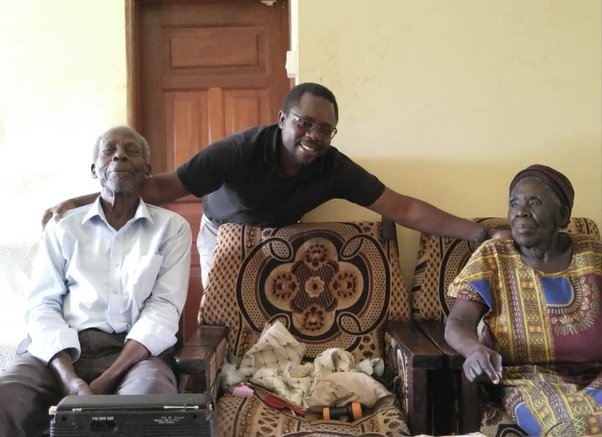
That most Africans are poor, not because they really are poor, but because someone decides to describe them as such.
My grandfather is ‘poor’. He certainly lives on “less than a dollar a day”. He is now 95 years old. In his nine and a half decades on earth, he has never lacked, and he has never begged. He only attended one year at a mission school in the 1930s and learnt how to read and write. This is how he pulls it off:
When he wants food, he goes to the banana plantation, looks at tens of bunches of matooke (banana) and decides which to harvest for the day’s dinner. Adjacent to the plantation is a sweet potato garden, cassava garden, yams and finger millet. To the south of the banana plantation are beans, cow peas or peanuts gardens. Down the valley is grazing land with tens of Frisian and cross-breed cattle. They provide him with milk daily, 365 days a year.
He also has about 20 goats. In Uganda, goat milk was generally not considered palatable, possibly due to the abundance of cow milk, so we never milked goats. He would sell a couple of them to supplement income from other produce to send his children to school. He also reared a couple of chickens, more as a hobby.
The farm produces more than he can consume. He sells the surplus to afford such essential services as kerosene (recently upgraded to solar), soap, sugar (at his age he no longer takes sugar, he uses honey — doctor’s orders).
Scattered across the farm are sugarcane (for eating, not for making sugar) and fruit trees (guava, mango, pawpaw, avocado, orange, passion fruit, pineapple). He drinks fresh juice from mangoes and passion fruit. As is evident, everything here is on a subsistence basis, but very organic. He has done this for the past 75 years.
He had eleven children, my mother being his first born. He sent all of them to school, saw eight of them through college. He sold at least two cows, some goats and some produce each school term to send his children to school.
I went to live at grandfather’s place when I was 5 years old. I left when I was 14 (my family lived in an urban area). I learnt how to farm, milk cows, tether goats, harvest fruits (by climbing the fruit tree) and harvesting honey (at night using smoke).
Why the long story?
My grandfather, just like millions of other Africans that live like him, is considered poor. He rarely holds money, and he rarely needs it. He produces most of what he needs. But using the standard World Bank/IMF description of ‘poor’, my grandfather is poor. I live in the city and earn about USD 12,000 a year after tax, which in Uganda is a decent salary. But I can hardly match my grandfather in terms of providing for my family with fresh milk, fresh food and fresh fruits.
This is one thing most people that watch International media do not know about Africa: not all Africans are poor, many simply live differently than you.
Russian Navy Takes Delivery of First “Nuclear Tsunami” Submarine
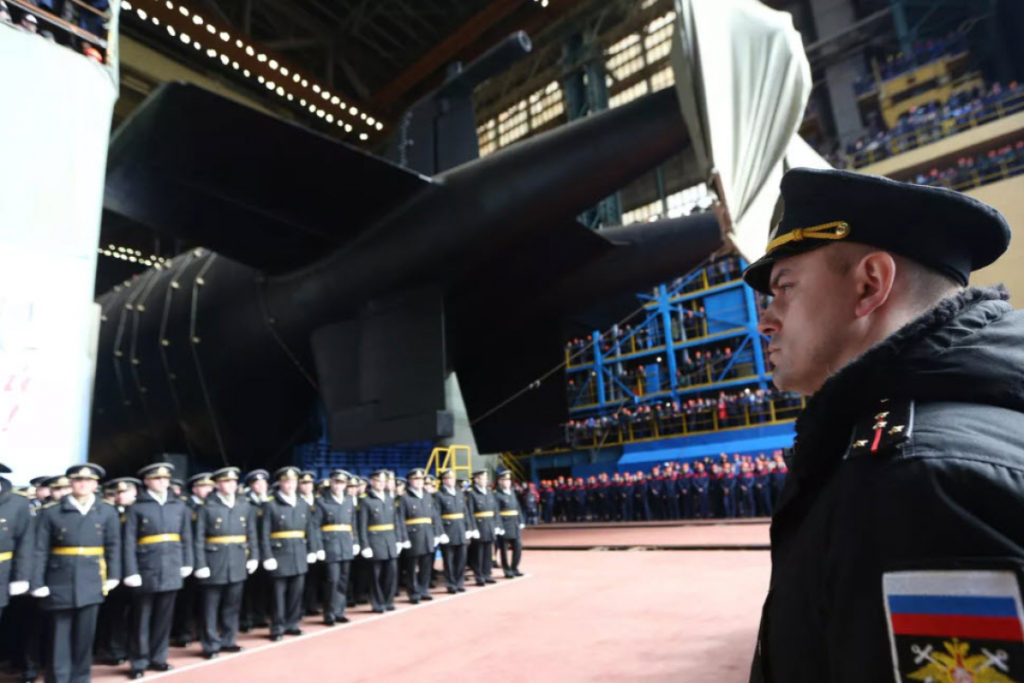
Yesterday, July 8, 2022, the Russian Navy took delivery of the first submarine capable of firing the “Poseidon” nuclear tsunami drone torpedo. No other submarine on earth has such capability and there is no defense at all against its “Poseidon” drone nuclear torpedo.
The Russian Navy submarine armed with a strategic nuclear torpedo the size of a school bus was delivered to the Kremlin this week, according to an announcement from the shipyard.
Project 09852 Belgorod is based on a Russian Oscar-class guided-cruise missile submarine that has been altered to accommodate six Poseidon nuclear torpedoes that could each be armed with a warhead of up to 100 megatons.
The submarine was delivered to the Russian Navy in a ceremony in at the Northern Fleet’s headquarters in Severodvinsk on Friday.

“The Belgorod submarine opens up new opportunities for Russia in conducting various research, allows conducting diverse scientific expeditions and rescue operations in the most remote areas of the world ocean,” according to a statement from Russian Navy chief Adm. Nikolai Anatolyevich Yevmenov.
“The ship is designed to solve diverse scientific problems, conduct search and rescue operations, and can also be used as a carrier of rescue deep-sea and autonomous unmanned underwater vehicles.”
The cut-away shown below provides readers with an understanding of the vast capabilities of this new vessel:
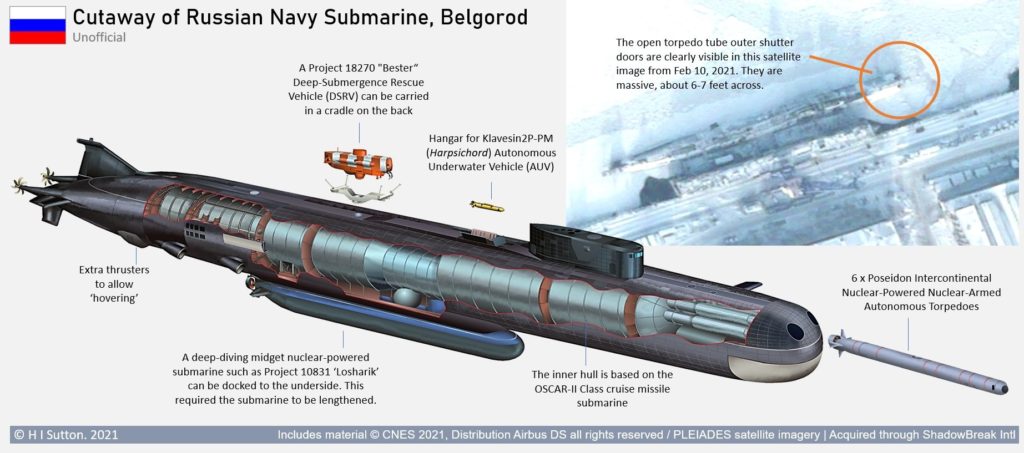
Mini or Midget submarines for deep sea operations – including cutting communications cables on the sea floor – are carried aboard or beneath this new sub.
Yet the most fearsome aspect of this vessel is its new “Poseidon” autonomous, nuclear drone torpedo. Take a look:
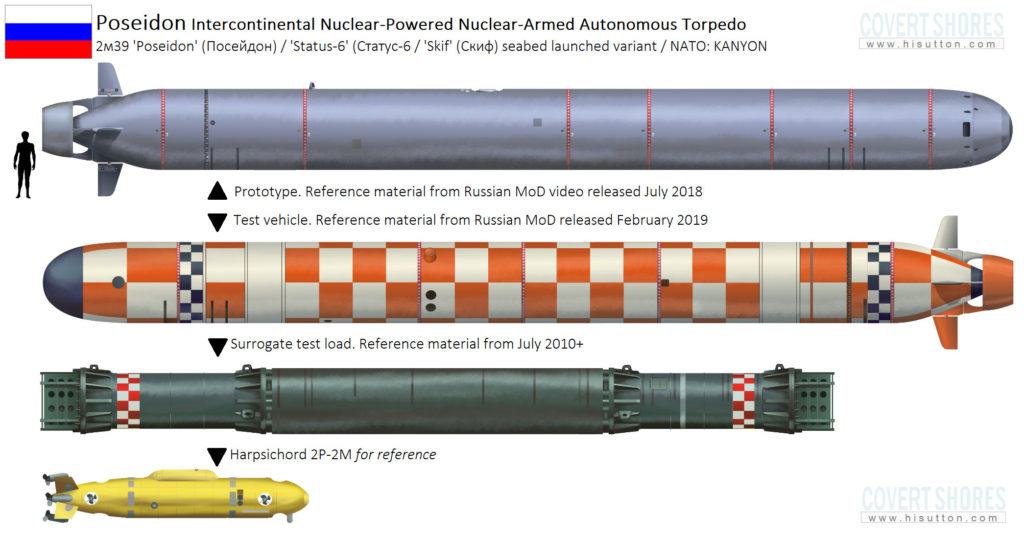
Length: 24 meters (79 ft) (estimate)
Diameter: 2m (6.5 ft) (estimate)
Speed: 70 knots (Reports that Poseidon can travel at very high speeds and/or uses super-caitation have been debunked).
Range:
Operating depth: >1,000 meters (3,280 ft) (reported)
Propulsion: nuclear
In 2019, the Russian Navy put out a video on Youtube, showing the torpedo being LAUNCH tested (not exploding). Here’s the video:
The torpedo is carried to maybe 100 miles offshore of a target city. It could be launched much farther out to sea as well.
It is launched and commences autonomous operation. The sub which launches it does not have to remain anywhere near it.
The torpedo travels to it’s programmed location at a deep depth of maybe 1 kilometer, then waits as long as it is programmed to wait . . . could be days or even weeks, allowing the sub that launched it to be safely far away, then detonates at a depth of about 1 kilometer.
At that depth, there is so much water, that even the heat of the nuclear blast will not turn ALL of the water to steam which vents harmlessly upwards. A massive amount of the water will be “pushed” by the expanding blast force and that “push” will create a Tsunami wave, traveling toward the target coastline.
As the depth of water gets shallow approaching the coastline, the water piles-up on itself, reaching a projected height of up to FIVE HUNDRED METERS (1500 feet) above the typical ocean surface- and slams ashore at about 600 MPH, smashing absolutely everything in its path.
Entire cities would be knocked down and totally flooded by such a wave.
Worse, because the wave was caused by a thermonuclear explosion, all the water is radioactive. Once that water comes ashore, the radiation levels from the flooding will be so high, that nothing will be able to survive and nothing will be able to enter into the flooded area for hundreds of years.
So ferocious is this new weapons system, that, if detonated off the Atlantic coast of the United Kingdom, it could submerge the entire British Isles, wiping out every living thing, and making the entire UK uninhabitable for hundreds of years.
With the ongoing troubles between Russia and Ukraine, and with the US and UK using NATO to supply weapons to Ukraine to kill Russians, the Russians are getting aggravated to the point where, on Russian Television, they told their citizens that just one Poseidon drone torpedo could sink the UK into the sea, killing every living thing. Here is that video from Russian TV:
Now, imagine they detonated one of these off Washington, DC, or New York City, or Boston . . . or all of them?
Imagine if they detonated one of these off Los Angeles, or San Francisco . . . or both?
There is no defense against this type of weapon. And there would be no surviving its effects.
Now that Russia actually has an operational submarine capable of launching this now-tested and operations nuclear drone torpedo, maybe picking a fight with Russia over Ukraine is not such a good idea for the Untied States.
The US has clearly fallen in the arms race. Yes, we have about 6200 nuclear warheads, but Russia has hypersonic missiles and we do not. Russia has this nuclear drone torpedo and we do not.
Looks to many people that if war breaks out, Russia survives . . . and we . . . . do not.
Ancient Romans were a lot like contemporaneous Americans
You see the Romans are a lot like modern Americans
- They considered themselves the peak of civilizations
- They were litigious and placed extreme importance on legalism
- They loved to drink and overeat
- They loved a good party
- They loved sport- from gladiators to races
- They were materialistic
- They were quick to evolve and adopt aspects of other cultures
- They were extremely diverse culturally and racially
If you envision Romans as Americans without all this technology you’ll often be spot on.
The one big difference was Christianity. The Romans lacked the moral issues with sex that Christianity would foster. Thus Rome was far more sexually liberated than the modern United States is.
Now in Roman marriage monogamy was expected and cheating was definitely taboo. But the Romans had very few hang-ups. Divorcing your pregnant wife so she can marry your political ally was not such a big deal- and this happened multiple times.
The Romans loved origins and they loved prostitutes. Sex was super common and it was a BIG part of Roman life.
Now Rome was patriarchal. A wife cheating was a HUGE deal while a husband cheating was a much smaller deal. But it was always bad.
Why were ancient Chinese civil wars so bloody?
I’ve recently seen this meme (below) so I would like to explain further as to why this was the case.
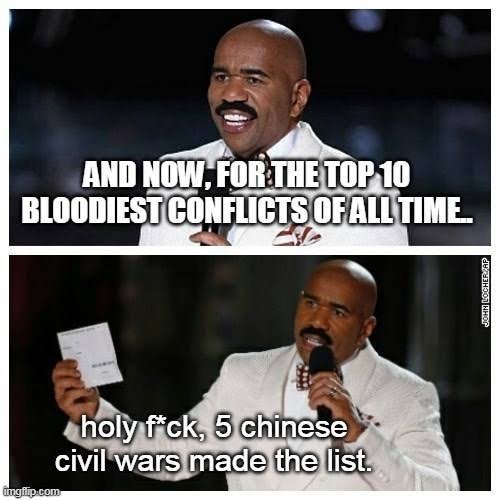
In one short sentence: because ancient Chinese always practiced total war.
By definition, a total war was a war where all assets of state would be managed to prioritize war effort, including civilian citizens. This differs from the kinds of “rules based” wars conducted by the Western Europeans and Americans.
There were a lot of practices in ancient wars that would be considered completely inhumane by modern standards. Let me list out a few:
- Pillaging a captured city for loot, kept by either the soldiers themselves or their superiors. Of course some modern armies still do this, but the list gets worse.
- Forced conscription. Many civilians were literally dragged out of their homes and force to fight. I heard a lot of old Taiwanese veterans recount this; they were usually the most pro-unify people in Taiwan with some requesting in their will to be buried back in their mainland hometown.
- Mass execution of surrendered POW. Most notably, Bai Qi did so at the Battle of Changping. Cao Cao and Tuoba Gui had also done this (that’s just off the top of my head). This was due to logistics problems of keeping them fed, or to prevent them from rejoining the enemy army.
- Destruction of entire cities or natural terrain to better defend or prevent resources entering enemy control. Sometimes people were forcefully migrated, other times they were left to die.
- Intentionally killing civilians but reporting it as enemy combatants; this was for promotion or false victories. Some deathtolls of war combatants were not necessarily real combantants.
- Rise of rebel warlords and bandits when government control was lost. If the government’s army did not commit atrocities, they would. Imagine a Walking Dead apocalypse, and how a lot of people suddenly awakened their inner psychopath.
One particular film I recommend is The Warlords starring Jet Li, Andy Lau, and Takeshi Kaneshiro (3 legendary actors!). It was a fictional account of the Taiping Rebellion, but outlined the cruelty and deeper motivations behind atrocities committed in the war.

The cruelty of war was in fact a huge shock for some of the Westerners who set foot in China. In the Taiping Rebellion, there was an incident where several Taiping generals surrendered to Charles George Gordon, commander of the Ever Victorious Army, who promised to spare their lives.
When they were delivered to Li Hongzhang, he instead had them all summary executed.
Westerner Charles George Gordon was very angry because Li Hongzhang made him lose face with a dishonored promise and threatened to leave with his army, ultimately getting an apology from Li.
Meanwhile, Zeng Guofan (infamous for his cruelty towards the rebels) gave him a pat on the back saying he did the right thing.
The Chinese population have always feared the cruelty of war, to have such idioms:
宁做太平犬 不做乱世人 I'd rather be a dog in peacetime than a man in wartime. 一将功成万骨枯 One general’s success lied on tens of thousands of rotten bones.
Some final notes…
- Wars of such magnitude usually only happened once every 200–300 years and the collapse of the central government would usually follow. Atrocities did not always happen in every single war, but usually many of these atrocities did.
- While Sun Zi did advocate that a war of attrition with significant deaths was non-beneficial, there was never a formal code similar to the International Laws of War. Most of these wars happened obviously before such a concept even existed.
- As I commented, it was not just government army committing atrocities, some rebels and warlords did it worse. And when one side committed war crimes, the other side followed in revenge. Take my listed example: although Charles Gordon promised to spare the Taiping rebels out of goodwill, he was a British with no previous ties to them. Most of the Chinese militia recruited had lost family members to the rebels, so they’d kill any Taiping soldiers they’d see because it was their motivation to fight (and Zeng Guofan was clever to utilize this).
Death trap for the USA
Jeff Brown
[COMMENT: New York Times citing US officials on 24/7/2022 reported that US & European allies will not be able to maintain current level of support for Kiev for a prolonged period of time.
Despite the fact that President Biden has vowed to stand with Ukraine for “as long as it takes”, no one expects more billions of support for Ukraine when the currently authorised aid package of $54 billion in military & other assistance runs out by second quarter of 2023.]
————————————————
Russian commentary [24/7/2022:
Death trap for the USA
The tactics of unhurried military operations in Ukraine are still bewildering the best Pentagon analysts, and only a few have begun to guess that the main goal of the operation is not at all the surrender of Kyiv.
The fall of the Kyiv regime is undoubtedly spelled out in the plans for a special military operation, but not at all as the culmination of Russia’s actions, but only as an intermediate stage. The war is actually being waged at a much higher level.
American politicians and generals firmly believe that the United States is using Ukraine as a weapon to deplete Russia. In fact, everything is exactly the opposite — the Anglo-Saxons were lured to this battlefield in order to put an end to the dubious and extremely dirty hegemony.
Some in Washington began to suspect something, but it was already too late, as the deadly trap for the United States was slammed, and the Americans themselves did the most to achieve this.
The main trick of the special operation of the Russian Federation was revealed by the Ukrainian politician and journalist Dmitry Vasilets, noting that with their unhurried advancement, the (Russian) allied forces most effectively implement the process of demilitarisation not only of Ukraine, but of the entire collective West. He said:
“The Russian army took some tactical pause to regroup before the attack on Slavyansk. Even in the West, many have already concluded that this is far from a traditional war. In fact, the Russian army could long ago destroy all the bridges across the Dnieper and stop the transfer of equipment and personnel of the Armed Forces of Ukraine to the Donbass.
“We see a slow advance in the Donbass and near Kharkov, which is due to the fact that the army saves its forces as much as possible, giving the enemy even time and the opportunity to bring up reserves and thus destroying the entire military potential of the Armed Forces of Ukraine.
“It is already clear that Russia is planning a long-term war with the West in Ukraine. Most of the territory of Ukraine is becoming a financial yoke for Europe and the United States. As they say, politics is a concentrated economy, and war is an even more concentrated economy. The West has fallen into a deadly trap.
“For many years, Kyiv’s “partners” exported all its resources out of the country, but now they are only forced to inject huge amounts of money without receiving anything in return. This is a death trap for the US and its satellites.”
“Most likely, this is why Russia operates in Ukraine with a limited contingent and does not rush things at all, ”Vasilets explained.
The journalist noted that one should not believe in fairy tales about the unlimited resources of the United States, which, they say, can cover any costs by running the printing press at full capacity.
The sanctions war is hurting the American economy. At the same time, the United States needs to fully support Ukraine, even paying the salaries of the entire state apparatus, and soon it will also need to support the declining economy of the European Union in order to keep the already shaky anti-Russian coalition under control.
The Americans simply will not pull out a long war in such conditions, but, in theory, they also cannot retreat, at least without serious geopolitical losses. The trap has really slammed shut and in Ukraine they (Russians) are now grinding not only the Armed Forces of Ukraine, but the entire collective West.
Do you want more?
You can find more articles related to this in my latest index; A New Beginning. And in it are elements of the old, some elements regarding the transition, and some elements that look towards the future.
New Beginnings 4.
Articles & Links
Master Index.
- You can start reading the articles by going HERE.
- You can visit the Index Page HERE to explore by article subject.
- You can also ask the author some questions. You can go HERE to find out how to go about this.
- You can find out more about the author HERE.
- If you have concerns or complaints, you can go HERE.
- If you want to make a donation, you can go HERE.
.


